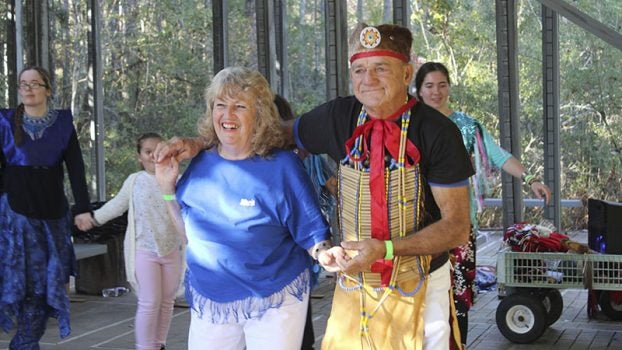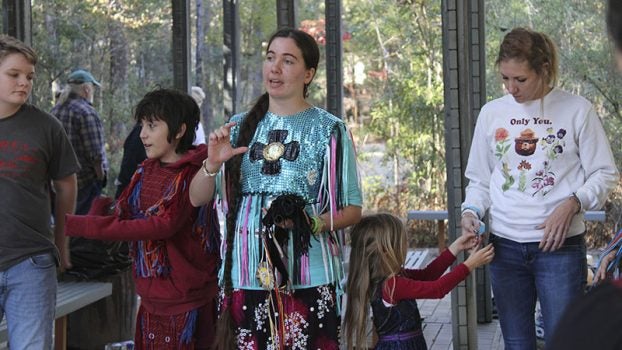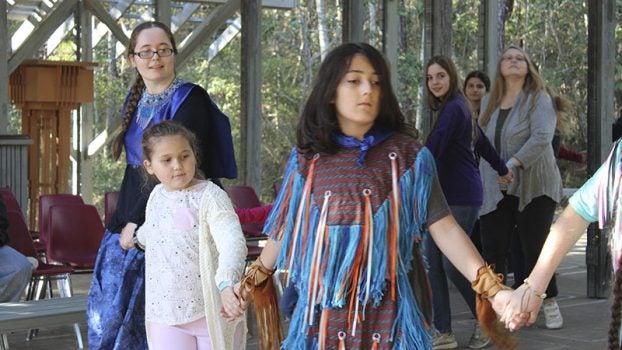Sharing traditions
Published 7:00 am Saturday, November 23, 2019
In the shade of the Pinecote pavilion, dancers stood in a circle while a little girl wove gleefully between them, chased by another dancer.
Rachel Billiot-Bruleigh, a member of the United Houma Nation, led the dancing at the annual Piney Woods Heritage Festival. Attendees learned the raccoon dance, a Choctaw social dance. Billiot-Bruleigh said the story she was taught is that the dance came from a Choctaw elder watching raccoons chase each other around stalks of corn in a field. The two people chasing each other represent the raccoons amid all the people in the circle who are the cornstalks, she said.
Billiot-Bruleigh also taught attendees the two-step, another social dance frequently performed at pow wows, she said. The dance is an amalgamation of different dances. Dancers partner and a lead pair show what steps to dance next.
Billiot-Bruleigh regularly teaches Native American history and culture in schools and at a summer camp for United Houma Nation children.
“It’s really important to us to show people there are still Natives here,” Billiot-Bruleigh said.
When she was in elementary school, her friends did not believe American Indians were real, she said. Her grandpa was taught to hide his culture growing up, so teaching culture and history with her family gives her a chance to show him support.
Along with social dances and pow wow etiquette, Billiot-Bruleigh and her family teach traditional hand games, history and talk about traditional foods. Her grandmother and uncle show ancestral weapons.
When they teach Native American children, they also teach some of the tribe’s language.
“It’s really important to do educational outreach to teach people. First, to teach cultural pride in our children, so that they know their culture is important,” Billiot-Bruleigh said.
The family almost decided not come to the Piney Woods Heritage Festival, because in August their normal regalia was lost in a van fire, she said. Billiot-Bruleigh is still remaking traditional regalia for her sister and mom.
“A lot of things you can’t just buy. You have to hand make stuff, unless you can find another Native artist,” she said.
Items that escaped the van fire include the long brightly colored fancy shawls that are used in women’s fancy shawl dancing. The contemporary dance form began around the 1960s with the American Indian Movement and the Civil Rights Movement as women got more involved in pow wow music and began incorporating more fancy footwork, Billiot-Bruleigh said.
To learn more about Native American culture, visit Native tribes’ official government websites, livestream pow wows, or attend a local pow wow that is open to the public. People can also reach out to the Lower Coast Native American Society through Facebook. The nonprofit is currently reorganizing, but normally Billiot-Bruleigh and her family do educational outreach through the nonprofit.






